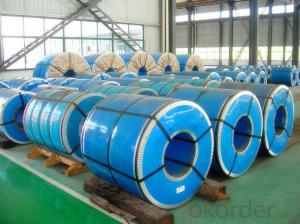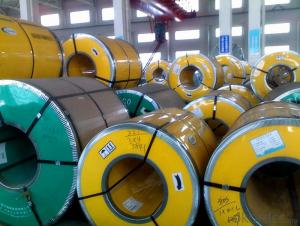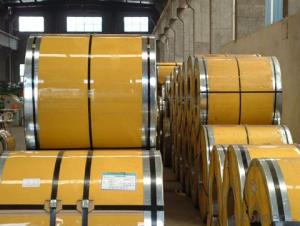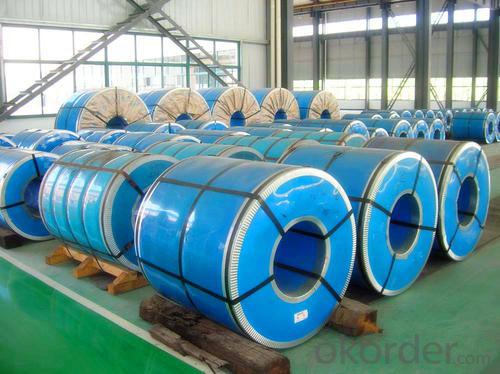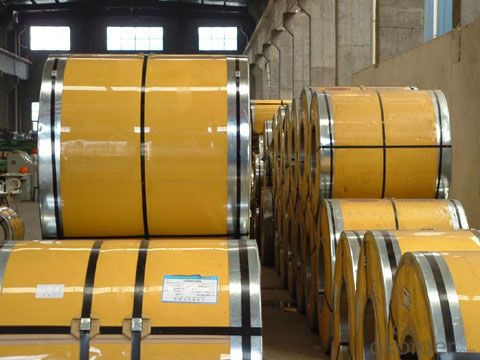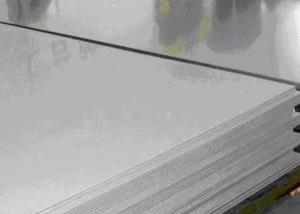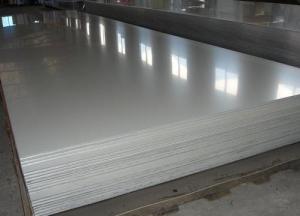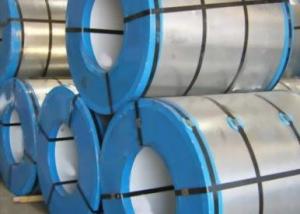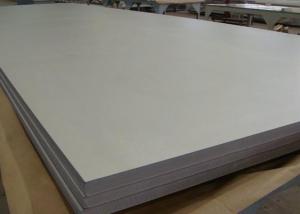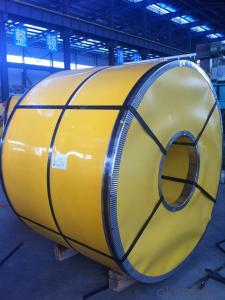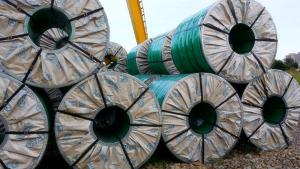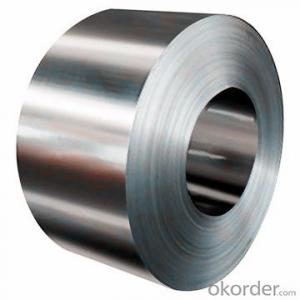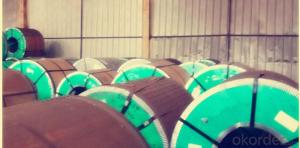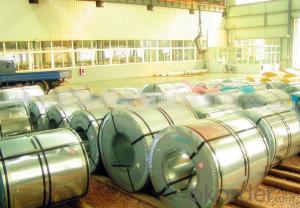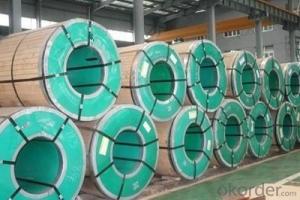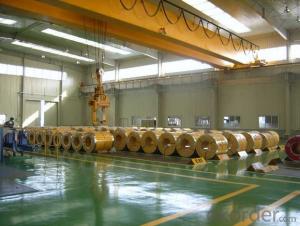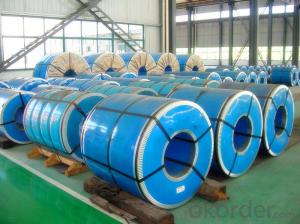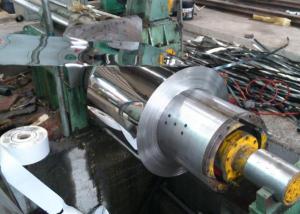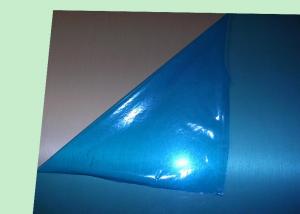Stainless Steel Coil 304 Hot Rolled Wide Strip No.1 Finish
OKorder Service Pledge
OKorder Financial Service
You Might Also Like
304 Stainless Steel Coil Hot Rolled Annealing and Pickling No.1 Finish Wide Strip
1.surface:NO.1
2.standard:JIS, AISI, GB
3.width: 0.55m
304 Stainless Steel Coil Hot Rolled Annealing and Pickling No.1 Finish Wide Strip Chemical Composition:
(%):C=0.07, Mn=2.00, P=0.045, S=0.030, Si=0.075, Cr=17.5-19.5, Ni=8.0-10.5, N=0.10
304 Stainless Steel Coil Hot Rolled Annealing and Pickling No.1 Finish Wide Strip Physical Properties
Tensile strength σb (MPa) ≥ 520
the conditions yield strength σ0.2 (MPa) ≥ 205,
elongation δ5 (%) ≥ 40
Reduction of ψ (%) ≥ 50,
hardness: ≤ 187
HB; ≤ 90
HRB; ≤ 200H
304 Stainless Steel Coil Hot Rolled Annealing and Pickling No.1 Finish Wide Strip
Type | 304 Stainless Steel Coil Hot Rolled Annealing and Pickling No.1 Finish Wide Strip |
Thickness | 3.0mm-4.0mm |
Width | 1000mm, 1219mm, 1240mm, 1500mm |
Length | according to weight |
Brand name | CNBM |
Standard | ASTM, AISI, DIN, GB, JIS etc |
Material | 304 |
Application | Foodstuff, Gas, metallurgy, biology, electron, chemical, petroleum, boiler, nuclear energy, Medical equipment, fertilizer etc |
Package | Standard export sea-worthy packing |
Delivery time | Within 15 days since getting the deposit or LC origin |
Surface | NO.1 |
Productivity | 20000 tons/month |
- Q: Can 111 stainless steel strips be used in the pharmaceutical industry?
- Certainly! The pharmaceutical industry can indeed utilize 111 stainless steel strips. Renowned for its resistance to corrosion, durability, and hygienic characteristics, stainless steel proves suitable for diverse applications within the pharmaceutical sector. The grade 111 stainless steel typically denotes AISI 304 stainless steel, a widely employed grade in pharmaceutical equipment and infrastructure. This grade boasts resistance to various chemicals and can withstand high temperatures, rendering it an ideal choice for pharmaceutical processing equipment such as tanks, vessels, and pipes. Moreover, stainless steel strips find utility in packaging, ensuring the preservation and safety of pharmaceutical products. In summary, 111 stainless steel strips offer reliability to the pharmaceutical industry owing to their exceptional properties and adherence to the industry's stringent requirements.
- Q: Can stainless steel strips be used in the automotive stamping industry?
- Yes, stainless steel strips can be used in the automotive stamping industry. Stainless steel is known for its durability, corrosion resistance, and strength, making it suitable for various automotive applications. It can be formed, stamped, and fabricated into different shapes and sizes to meet the specific requirements of the automotive industry.
- Q: What are the common uses of stainless steel strips in the mining industry?
- Stainless steel strips are commonly used in the mining industry for various applications such as conveyor systems, screening equipment, and storage tanks due to their durability, corrosion resistance, and high strength properties. Additionally, they are used in the construction of mining machinery, support structures, and extraction tools, as well as for lining pipes and vessels to withstand extreme conditions and prevent material degradation.
- Q: Are stainless steel strips suitable for architectural mesh?
- Yes, stainless steel strips are generally suitable for architectural mesh due to their durability, corrosion resistance, and aesthetic appeal.
- Q: Are stainless steel strips resistant to atmospheric corrosion?
- Yes, stainless steel strips are resistant to atmospheric corrosion. Stainless steel contains chromium, which forms a protective layer on the surface when exposed to oxygen. This layer, known as a passive film, acts as a barrier that prevents further corrosion from occurring. Additionally, stainless steel also contains other alloying elements such as nickel and molybdenum, which further enhance its resistance to atmospheric corrosion. Therefore, stainless steel strips are highly resistant to rust, tarnish, and other forms of atmospheric corrosion, making them an ideal choice for various applications exposed to outdoor environments.
- Q: Can stainless steel strips be used for food storage containers?
- Yes, stainless steel strips can be used for food storage containers. Stainless steel is a popular choice for food storage containers due to its durability, corrosion resistance, and non-reactive properties. It does not impart any taste or odor to the food stored in it, making it a safe option for storing various types of food. Additionally, stainless steel is easy to clean and maintain, making it a hygienic choice for food storage. However, it is important to ensure that the stainless steel strips used for food storage containers are of food-grade quality to meet safety standards.
- Q: Are stainless steel strips resistant to humidity?
- Stainless steel strips demonstrate resistance to humidity. This is due to the exceptional corrosion resistance of stainless steel, which encompasses its ability to withstand humidity and moisture. The inclusion of chromium in stainless steel generates a protective layer on the surface, preventing oxidation and corrosion. As a result, stainless steel strips exhibit high resistance against the impacts of humidity, rendering them a suitable option for a range of applications in humid settings, including kitchen appliances, outdoor structures, and industrial equipment. However, it should be noted that extended exposure to exceedingly high humidity or corrosive environments may still lead to some degree of corrosion, although it would be significantly less when compared to other materials.
- Q: Can stainless steel strips be plated or coated with another metal?
- Yes, stainless steel strips can be plated or coated with another metal. The process of plating or coating stainless steel involves depositing a layer of another metal onto the surface of the stainless steel strip. This can be done for various reasons such as enhancing the appearance, providing corrosion resistance, improving hardness or lubricity, or for electrical conductivity. The plating or coating can be achieved through different methods such as electroplating, electroless plating, physical vapor deposition (PVD), or chemical vapor deposition (CVD). Each method has its own advantages and limitations, and the choice of plating or coating method depends on the desired properties and application requirements. It is important to consider factors such as compatibility between the stainless steel and the plating or coating material, thickness of the plating or coating layer, and the specific environmental conditions the stainless steel strips will be exposed to. Overall, plating or coating stainless steel strips with another metal is a common practice in various industries to achieve desired functional or decorative properties.
- Q: How do you remove scratches from stainless steel strips?
- To remove scratches from stainless steel strips, you can try a few methods: 1. Start by cleaning the surface with warm soapy water and a soft cloth. This will help remove any dirt or grime that may be masking the scratches. 2. Use a non-abrasive stainless steel cleaner or a mixture of baking soda and water. Apply the cleaner to a soft cloth and gently rub it onto the scratched area in a circular motion. Be sure to follow the grain of the stainless steel to avoid further damage. 3. For deeper scratches, you can use a stainless steel scratch remover or a metal polishing compound. Apply a small amount of the product onto a clean cloth and rub it into the scratch using a circular motion. Continue rubbing until the scratch fades or disappears. Make sure to wipe off any excess product and rinse the area with water. 4. Another option is to use a fine-grit sandpaper or a stainless steel polishing pad. Start with a lower grit sandpaper (around 400) and gently rub it over the scratch in the direction of the grain. Gradually move to higher grit sandpaper (800, 1000) for a smoother finish. Remember to clean the surface afterwards to remove any residue. 5. If the scratches are too deep or extensive, it may be necessary to hire a professional to repair or replace the stainless steel strips. Remember to always test any cleaning or polishing method on a small, inconspicuous area first to ensure it doesn't cause any damage.
- Q: Are stainless steel strips available in different widths?
- Yes, stainless steel strips are available in different widths.
Send your message to us
Stainless Steel Coil 304 Hot Rolled Wide Strip No.1 Finish
OKorder Service Pledge
OKorder Financial Service
Similar products
Hot products
Hot Searches
Related keywords
